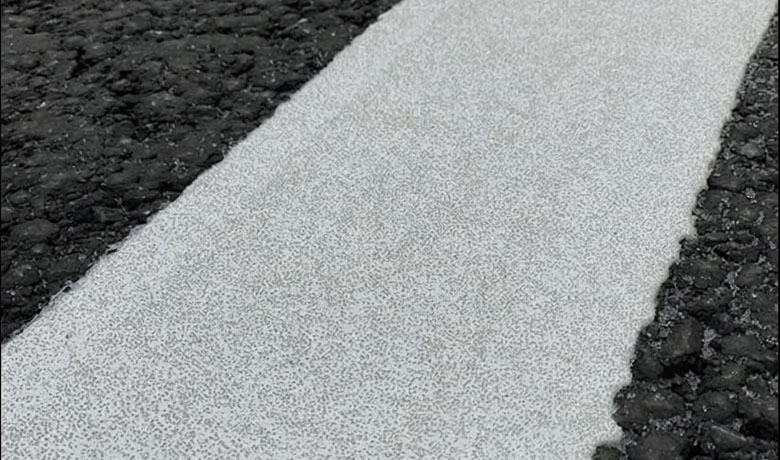At night or in a low light environment, the clear visibility of road traffic markings is essential to ensure driving safety. The principle of reflective marking mainly relies on a physical phenomenon called “retro-reflection”. At the heart of this phenomenon lies the key reflective substance, glass beads, which play an irreplaceable role in retro-reflective road marking paints.

When light from headlights strikes the surface of a glass bead, the light enters the bead and is deflected back by the vertical surface of the coating as it reaches the bottom of the bead and comes into contact with the coating. This refracted light is then projected back into the driver’s eyes, depending on the properties of the glass bead surface. This retro-reflective mechanism allows drivers to see the ground markings clearly at night, even when there are no street lights, thus effectively improving road safety.
The application of glass beads in traffic marking is not arbitrary, but has strict performance requirements. According to GB/T24722-2009 “road marking glass beads” standard, the glass beads are subdivided into three categories to adapt to different types of marking paint. 1 class of glass beads for hot melt, two-component and water-soluble road marking paint surface spreading; class 2 is suitable for these paints pre-mixed use; and class 3 is designed for saturated solution-type road marking paint surface spreading. Type 3 is designed for the surface spreading of saturated solution marking paints.
During the road marking paint application, the embedding of the glass beads is just as important as the spreading. In order to ensure that the glass beads are firmly bonded to the coating, it is usually required that 1/2 to 2/3 of the bead volume is embedded in the coating. At the same time, a reasonable spreading volume of glass beads is strictly controlled in the range of 0.3-0.4 kg/m². This design not only ensures the good reflective effect of the road marking paint in the initial state, but also makes it possible to extend the reflective life of the road marking paint in the process of gradual wear and tear of the paint film, after the large glass beads exposed on the surface are dislodged, the small glass beads embedded inside the paint film can be polished and continue to play the role of reflective, thus extending the reflective life of the road marking paint.
Of course, to give full play to the reflective effect of glass beads in traffic marking, but also need to strictly comply with the operational requirements in the construction process. From the cleaning of the road surface to the measurement of sampling, and then to the demarcation of the marking, each link needs to be carefully operated. Especially in the demarcation process, must ensure that the spreading of glass beads and road demarcation synchronization, so as to ensure that the reflective effect of the marking line to achieve the best state.

Leave a Reply